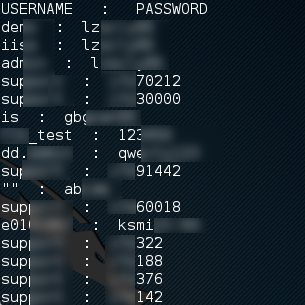Recently, I was working on a web application assessment that acted like a feature filled version of the Damn Vulnerable Web App. That meant there was a lot of XSS of course and a heavy handful of SQL injection vectors. This isn’t a post on how terrible the application was but the interesting way they chose to store their password hashes.
Once I found a vulnerable parameter in the application I started to see what the current database user could do. There was no xp_cmdshell, and I was a low-privileged user, so my database access was limited. After a little poking around, I found the table where the usernames and passwords were stored. Almost 118,000 usernames and passwords were present. These numbers are skewed a little since the database stored user’s previous passwords as well as their current password. Regardless, there were still over 104,000 unique hashes.

With a little python-fu, I was able to pull out the hashed password, base64-decode it, and then print the hex output. As it turns out, the output was an md5 hash.


There are a few lessons to learn from this scenario. Encoding isn’t the same as encrypting. When the password policy changes, users and administrators alike should be required to update their password. Passwords should not be easily guessed i.e. not a dictionary word. When hashing a password, they should be salted with a unique and long string. For more information on securing passwords, visit https://crackstation.net/hashing-security.htm.

